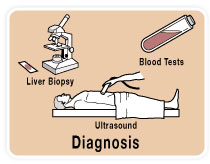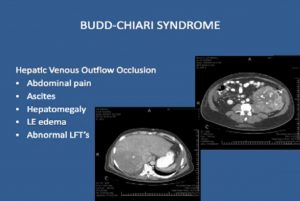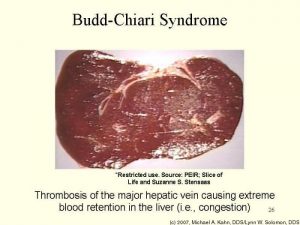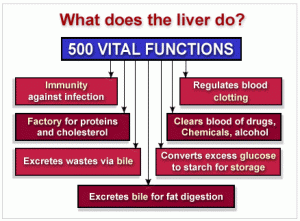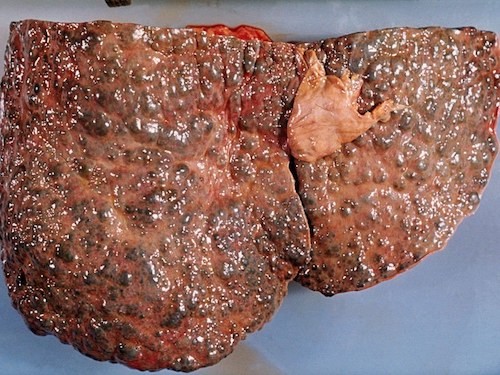
Cirrhosis of the Liver Stage 4
It's been 11 years since I started my Wiki and shared articles on Liver Disease. In that time the website in its various forms has had millions of visitors and helped countless people.
I've only ever asked for help once in those 11 years and that was to help pay the hosting. But that was only once.
For the rest of the years I have built, populated, maintained and tried to improve the website and given support to many people.
It now turns out that I have cancer of the throat - just diagnosed in January 2020.
I have created a Facebook page to post updates on - https://www.facebook.com/Craig-Cameron-My-Story-104963801053247/
Once I get 200 Likes I can change the name to remove the numbers on the end - and that will look better 🙂
I really would appreciate it if you would visit my Facebook page and 'Like' it -
Once I get some support from the people who visit this site I will remove this message.
Cirrhosis of the Liver Stage 4
This site can teach you how to manage, treat and even reverse cirrhosis of the liver stage 4. Many of our members have been able to resume near normal lives without needing a transplant.
If you are worried about cirrhosis this site can help you.
Looking for information on cirrhosis of the liver stage 4? Liver cirrhosis, a ‘silent killer’, is a chronic disease. There are no symptoms during the early phases of this disease. Read on to know about liver cirrhosis stages and cirrhosis of the liver life expectancy.
Liver cirrhosis indicates injured or damaged liver cells. Normal liver tissues get replaced with scar tissues during liver cirrhosis. Scarring of the liver is caused by long term injury or damage to the liver resulting in loss of liver function. Cirrhosis of the liver stage 4 denotes the final stages of the disease.
Liver plays an important role in digestion and detoxification. Cirrhosis of the liver affects the liver function. As liver cirrhosis cannot be reversed, the treatment involves only prevention of further progression of the disease.
Cirrhosis of the Liver Stages
Cirrhosis of the Liver Stage#1:
During this initial stage of cirrhosis, the person normally does not experience any symptoms. If closely observed, there are symptoms indicating liver function problem, which include dry mouth, fatigue, jaundice and enlargement of the upper stomach area. Itching sensation is also sometimes experienced.
The liver suffers from inflammation and abnormal tissue but disease progression and liver function deterioration is very slow. Advancement of cirrhosis of the liver can only be determined by biopsy results.
The initial stage of liver cirrhosis is actually called ‘compensated stage’, as the body successfully manages and compensates on its own for all the shortcomings that are brought on by malfunctioning of the liver.
Cirrhosis of the Liver Stage#2:
During this stage, abnormal tissues developed inside the liver get transformed into stiff bands of connective tissues. This process is known as fibrosis. Fibrosis and inflammation of the liver spreads and affects the portal veins and the surrounding regions.
Cirrhosis of the Liver Stage#3:
As the disease advances, all the stiff bands begin to merge with each other. This leads to the enlargement of affected areas. Disruption of liver functions is generally noticed during this stage, as the person experiences inability to digest fats. Vitamin deficiency can also be noticed due to problem in absorption of fat-soluble vitamins.
Cirrhosis of the Liver Stage#4:
The final stage of liver cirrhosis is known as the decompensated stage of cirrhosis. This stage is the most dreaded one. Liver transplant is the only treatment option for patients in the decompensated stage. (Note: This statement is not completely accurate. For those with Alcoholic Cirrhosis the damage can be halted and a return made to reasonably normal life by abstaining from alcohol, undertaking a regimen of vitamins and minerals and eating a healthy diet. This can and does happen as long as the disease is not too far advanced. Further information is available on this site which will set you on the right path. Many people who have joined this site have survived through the help given by this site.)
Worsening of all the symptoms can be noticed. Here is a list of most common liver cirrhosis symptoms.
Liver Cirrhosis Symptoms:
Compensated Stage
Fatigue
Extreme thirst
Thick coating on the dorsal surface of the tongue
Anorexia
Nausea
Abdominal bloating
Dull ache in the liver area
Cirrhosis of the Liver Stage 4 Symptoms:
Decompensated Stage
Spider moles
Liver shrinkage
Jaundice
Edema
Ascites
Liver palms
Low grade fever
Severe fatigue, exhaustion
Loss of appetite
Stomach pain and cramps
Easy bruising and bleeding (especially in the abdominal region)
Cirrhosis of the Liver Life Expectancy
Cirrhosis of the liver stage 4 can result in severe health complications such as portal hypertension, spleen enlargement, hardening of liver, kidney dysfunction and accumulation of fluid in the body. Loss of bone mass and a drop in the bone density can also be noticed. Pertaining to the impaired liver functioning, the body will lose its ability to detoxify itself, resulting in concentration of toxins in the body. This will lead to severe confusion, even a coma.
After heart disease and cancer, liver cirrhosis is the third leading cause of death. There are many types of cirrhosis, based on the causes. Alcoholic cirrhosis has the worst prognosis, when compared to primary biliary cirrhosis or cirrhosis induced by hepatitis. Cirrhosis life expectancy can be about 15 to 20 years if cirrhosis is detected during an early stage.
If the disease is detected in second stage, life expectancy will be about 6 to 10 years. Patients in earlier stages can opt for latest treatment options, liver transplant, latest medicines, etc. If cirrhosis is diagnosed during the last stage, then life expectancy will be about 1-3 years, depending upon the patient’s overall health, availability of advanced treatment, etc.
I hope the above information has helped you to understand what is cirrhosis of the liver. Liver cirrhosis does not have a sudden onset, it takes years of damage to produce harmful scarring, and then many more years of abuse for the liver to stop functioning completely. Overlooked underlying conditions make the condition deadly. Cirrhosis treatment can help stop or slow down the progression of the disease.
During cirrhosis of the liver stage 4, liver failure and other health complications ultimately result in death of the person. Since cirrhosis of the liver and death are closely associated, it is necessary to undergo routine medical check-ups to monitor liver function. Cirrhosis is mostly detected during the test for some other health problems. Half yearly examination can help improve your chances of detecting an early cirrhosis.
By Leena Palande
Published: 8/14/2010
Related Posts
Information about Cirrhosis, symptoms etc.
Cirrhosis Many Causes The onset of cirrhosis is often ‘silent’ with few specific symptoms…” Basic facts about the liver Your liver, the largest organ in your body, weighs about three pounds and is roughly the size of a football. It lies in the upper right side of your abdomen situated mostly under the lower ribs.…
Budd-Chiari Syndrome Overview 2
Budd-Chiari Syndrome Overview 2 Overview Budd-Chiari (pronounced bud kee-ah-ree) syndrome is a rare liver disease – even more rare in children. It involves clotting of blood in the hepatic veins, which carry blood out of the liver. When the veins of the liver are blocked, blood is prevented from flowing out of the liver and…
Budd-Chiari Overview
Budd-Chiari Overview Budd-Chiari syndrome is caused by blood clots that completely or partially block the large veins that carry blood from the liver (hepatic veins) into the inferior vena cava. Some people have no symptoms, but others experience fatigue, abdominal pain, nausea, and jaundice. Fluid may accumulate in the abdomen, the spleen may…
Alcohol Addiction
Alcohol Addiction Alcohol addiction may be by far one of the hardest addictions to overcome. While alcohol addiction often starts out in a way that is very similar to any other addiction it can quickly turn into a complete physical dependency. Most addiction begins as a way for person to cope with problems and feelings…
It Is Never Too Late To Stop Drinking
It Is Never Too Late To Stop Drinking ScienceDaily (Apr. 16, 2009) — Where there is life there is hope and it is never too late to stop drinking, even with the most severe case of alcohol-related liver disease, according to new research from the University of Southampton. However, the downside is that up a…
Do You Use Alcohol for Stress Relief?
Alcohol for Stress Relief? Even though many people use alcohol to ease stress, there is evidence that it does just the opposite – especially when it comes to stressing the liver. by Nicole Cutler, L.Ac. Stress can be defined, experienced and handled in a countless number of ways, but most health experts agree that continual…
- « Previous
- 1
- …
- 4
- 5
- 6
